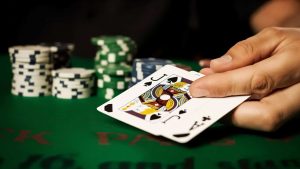
Generally, the most common Bingo cards are flat pieces of cardboard or disposable paper. They feature twenty-five squares, five on each vertical column, and five on each side of the card. Each square contains a number. The middle square is designated as a “Free” space. To play, the player must mark each square with an adhesive tape before the game begins. The winning number is determined by calling Bingo and if the winning number is not called within the first minute, the game continues.
In the United States, the standard size for bingo cards is 552,446,474,061,128,601,600. Depending on the number of players, the cards can be larger or smaller. In the United Kingdom, bingo is commonly played in primary schools and in English language classes. It is a game of possibility involving chance drawn numbers. In the UK, the game is taught in English language classes. The modern form of the game is a descendant of the original.
Bingo cards are a flat piece of cardboard or disposable paper with 25 squares. The number of “faces” on a Bingo card is known as “On’s”. A typical bingo card has six “On’s.” A common pattern is “6 ON.” The number of unique playing cards is the product of five columns. The product of five rows is the total number of unique playing cards. There are no unique numbers on the cards, but the patterns are almost infinite.
The most common Bingo cards are made of cardboard or disposable paper. They have numbers one through seventy printed on them. The number of unique cards in a card is five times the number of squares on each row. Each square contains a different number. Some spaces on the card are blank. These spaces are considered “Free.” The card also contains a “Free” space in the middle. In the game, the player must guess whether the number in their bingo is within that space.
The most common Bingo cards are flat pieces of paper or cardboard. They have 25 squares arranged in five columns and five rows, with the middle space designated as “Free” space. In a typical game, the number of unique playing cards is the product of the number of squares on the card. For this reason, there aren’t any cards that are identical to each other. The same is true for the most common Bingo sets.
The most common Bingo cards are rectangular flat pieces of paper or cardboard. They have 25 squares each and are divided into five horizontal rows. Double-action cards contain two numbers each, and cover-all cards award the jackpot if all 25 squares are filled. They are commonly printed on disposable paper or cardboard, and can be found at local bingo halls. This type of Bingo is a great way to get more people involved in a bingo game.








